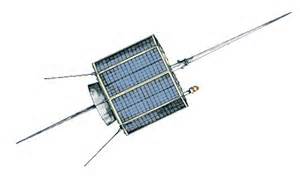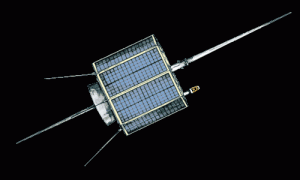Suggested Edit for Satellite
Suggested by ENSFNM on: 2021-10-13 07:43
Citation: https://www.amsat.org/two-way-satellites/ao-7/
Verdict: Approved
Reviewed by - on: 2021-10-14 08:48
| Name | AO-7 |
| NORAD ID | 7530 |
| Followed NORAD ID | - |
| Alternative Names | OSCAR 7 AMSAT OSCAR 7 |
| Description | AMSAT-OSCAR 7 was launched November 15, 1974 by a Delta 2310 launcher from Vandenberg Air Force Base, Lompoc, California. AMSAT-OSCAR 7 contains two basic experimental repeater packages, redundant command systems, two experimental telemetry systems, and a store-and-forward message storage unit. The spacecraft is solar powered, weighs 65 pounds, and had a three-year anticipated lifetime at the time it was launched, but it has far outlived this expectation. It contains beacons on 29.50, 145.975, 435.10 and 2304.1 MHz. AO-7 became non-operational in mid 1981 due to battery failure . In 2002 one of the shorted batteries became an open circuit and now the spacecraft is able to run off solar panels. |
| Owner/Operator | - |
| Status |
|
| Countries of Origin | |
| Website | https://www.amsat.org/two-way-satellites/ao-7/ |
| Dashboard URL | - |
| Launch Date | Nov. 15, 1974, midnight |
| Deploy Date | - |
| Image |  |
| Field | Previous | Suggested |
|---|---|---|
| Name | OSCAR 7 | AO-7 |
| Alternative Names | AO-7 | OSCAR 7 AMSAT OSCAR 7 |
| Description | This satellite was a small communications satellite designed by amateur radio operators. Attitude control was accomplished with a magnetic and damping rods. There were two beacon experiments (near 30 and 430 MHz), and two repeaters with code storage capability. The repeater receiver frequencies were near 146 and 432 MHz, and the transmitter frequencies near 30 and 146 MHz. The command system was manufactured in Australia and the second repeater in Germany. | AMSAT-OSCAR 7 was launched November 15, 1974 by a Delta 2310 launcher from Vandenberg Air Force Base, Lompoc, California. AMSAT-OSCAR 7 contains two basic experimental repeater packages, redundant command systems, two experimental telemetry systems, and a store-and-forward message storage unit. The spacecraft is solar powered, weighs 65 pounds, and had a three-year anticipated lifetime at the time it was launched, but it has far outlived this expectation. It contains beacons on 29.50, 145.975, 435.10 and 2304.1 MHz. AO-7 became non-operational in mid 1981 due to battery failure . In 2002 one of the shorted batteries became an open circuit and now the spacecraft is able to run off solar panels. |
| Website | - | https://www.amsat.org/two-way-satellites/ao-7/ |
| Launch Date | - | Nov. 15, 1974, midnight |
| Image |

|

|